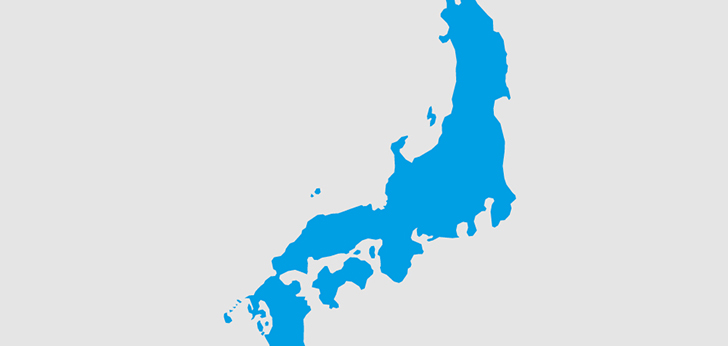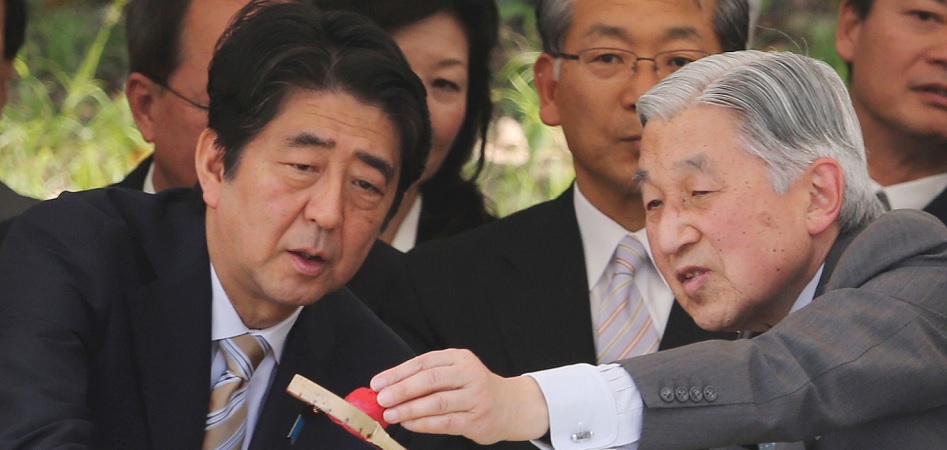A Changing World: Japan, a ‘cloudy’ empire without a new storm ahead
The third world power saves another year with a growth of 0.7% but with the risk of stagflation, and now faces two key years, with tax increases and the Olympic Games.

Fashion business’ game board has turned around. The legacy of the crisis, instability, the peak of populist movements, the attempts to move backwards in globalization and the threat of the global economic downturn has made almost all the predictions fail one by one. The world undergoes a transformation, and fashion, as a global player, must adapt and transform with it. MDS will go through the keys for the new order in the most important markets in the sector and how this can affect one of the most globalized business in the world.
Futuristic, but old. A modern democracy but with a head of State that only thirty years ago was considered divine. An economy that grows, but under the eternal stagflation as sword of Damocles. Japan, the third world power, faces again two new key years, with major challenges, like the tax increase or the global slowdown and the organization of two large worldwide events (the Olympic Games and the Rugby World Cup).
Since the implantation of the so-called Abenomics in 2013, the economic program launched by the president Shinzo Abe to boost the economy, Japan has maintained a steady growth every year, but with ups and downs, reaching up to five slowdowns in seven years.
The Japanese economy grew by 0.7% in 2018, according to data by the country’s Cabinet Office. The evolution of the components of the Japanese Gross Domestic Product (GDP) in the fourth quarter was uneven: the exports were affected by the evolution of China, from which it has a great dependence, and private consumption advanced below the expectations. However, private investments shot up 2.4%, compared to the forecasted 1.8%.
It is forecasted that Japan will grow by 1% in 2019 and 0.7 in 2020, when the tax increase will have an impact
The forecasts for the upcoming years focus on maintaining rates of % in 2019 and 0.7% in 2020, according to the last estimates published in November by the International Monetary Fund (IMF).
Nevertheless, the country faces huge challenges that have remained on the horizon for decades. First, Japan has the highest debt of GDP in the world (and the highest ever registered in the OECD), which forces to perform progressive tax increases.
The last one, performed in 2014, was for some economists the reason for the downturn. The next one is scheduled for this year, after being postponed twice. Its objective is that the increase allows financing social costs that do not stop ascending in the most aged country in the world.

The increase will be more moderate than the last time (two percentage points, compared to three from last year) because, according to Abe, “we have learned from the mistakes of the past.” The OECD estimates that its impact will be temporary and compensated by tax incentives.
For its part, the monetary policy will continue to be expansive to reach the inflation objective of the Central Bank of Japan, of 2%, that is not reached. In recent decades, Japan has barely known what inflation is: since 1996 the Consumer Price Index (CPI) has grown by 2.4%, in contrast to 46% in the United States, 41% in the United Kingdom and 29.1% in Germany.
Another of the major threats to the Japanese economy is the labour market in the most aged country of the world. International organisms insist more and more when they have a chance on the need of an urgent structural reform to boost productivity and employment, including the rise in the retirement age, currently established at sixty years.
In the so-called New Economic Policy Package, President Shinzo Abe set the objective of doubling the production growth to 2% in 2020 thanks to measures such as support for SME investment and tax incentives for the increase on wages and investment.
Protectionism is another risk for the Japanese economy, as the OECD points out in its last report on the country, published in November 2018. With all, Japan is in negotiations with a new trade agreement with the United States and it is one of the drivers of the Trans-Pacific Partnership (TPP), which will enter into force this year, so the organism rules out the implementation of new restrictive measures for this year.
New round for Abe, final one for Akihito
Shinzo Abe begins the year reinforced by the victory, for the third time, in the elections to lead his party. In 2020, Abe will become the longest-serving premier of modern Japan, and will use that support to carry out its revision of the pacifist Constitution.

The reform, which will be submitted to a referendum, aims to change the current role of the Japanese military force and adapt it to “the new global challenges.” The Magna Carta, imposed by the United States at the end of the Second World War to avoid another conflict, renounces in its Article 9 to conduct military operations beyond its borders, unless they are strictly self-defence.
Abe relies on the rise of China and the threat of North Korea to make the constitution grant Japan the right to “collective defence”, what would allow to military assist an ally.
In parallel, Emperor Akihito will abdicate on April 30, 2019, thus becoming the first Japanese emperor in 200 years to leave office. The chrysanthemum throne will be occupied by its son Naruhito. After him, a crisis of succession opens up, since the Crown Prince has no male offspring, which has not yet motivated to abolish the Salic Law that prevents women from accessing the throne, forces them to leave their rights and marry a commoner and prevents their children from being part of the line of succession.
Tourism and opening to compensate ageing
The major challenge for Japan is its accelerated ageing, aggravated by the country’s historic barriers to immigration. The population of the archipelago is reduced by around one thousand people per day, and the average age is 47 years old.
For the labour market, the challenge is huge: it is estimated that by 2050 the percentage of dependent people will rise to 75% of the total number of employees, the highest share in the world. Besides, the country lacks public pension plans for those who have not worked, which caused some old people (especially women) to commit minor offences to be sent to prison: almost one out of five prisoners are over sixty years old.
To make up for it, the Government proposed to allow those foreigners that have completed training programs to remain in Japan for five additional years to work in sectors with a shortage of available workers, such as construction. However, the challenge is still great: at the end of 2018 there were 1.6 available jobs in the country for every active Japanese.
Another big challenge presented by the drop in population is consumption. To balance out that issue, the country is undertaking reforms to stimulate the tourism (starting with improving signs in English and supplying hotel personnel with translation apps) and is confident that visitor arrivals will increase to 40 million in 2020, compared to 29 million tourists in 2017.
To achieve that, Japan has two large weapons: the country will host the Rugby World Cup this year, which will be celebrated in Asia for the first time, and in 2020 Tokyo will be the host city for the Olympic and Paralympic Games.

Shelter for European luxury
With a GDP per capita of 42,900 dollars, similar to that of France or the United Kingdom, Japan is the second largest luxury market in the world, only behind the United States and still ahead of China.
Brands like Hermès or Louis Vuitton have in the country one of its main international markets, and the Ginza district, in Tokyo, is the third most expensive in the world to open commercial premises, only behind the Fifth Avenue in New York and Causeway Bay, in Hong Kong.
After the fall in consumption in 2011 due to the global financial crisis and the subsequent catastrophes in Fukushima and Tohoku, the sector has recovered and it is estimated that the annual expenditure in luxury goods reaches 3.6 trillion yen (28 billion euros), according to McKinsey.
In addition, the country is home of large operators in the sector, such as Muji (that sells from stationary items to houses and is one of the biggest retailers in the country) and Fast Retailing, owner of Uniqlo and forth major fashion distributor in the world.
Japan also has historic department store operators, like Isetan Mitsukoshi, founded in 1886 and with an approximate number of one hundred stores in eight countries. The group was hit by the denominated retail apocalypse that affected groups based in the United States and the United Kingdom in the last years, and closed 2017 with losses for the first time in eight years, even though it forecasts to return to numbers in the black during the current year, which closes on 31 March.
Overall, each Japanese spends an average of 707 dollars per year on clothing, according to Statista. The fashion market will rise to 88.98 billion dollars in 2019 and it is estimated that it will grow by 1.9% per year until 2021.


info@themds.com
Validation policy for comments:
MDS does not perform prior verification for the publication of comments. However, to prevent anonymous comments from affecting the rights of third parties without the ability to reply, all comments require a valid email address, which won’t be visible or shared.
Enter your name and email address to be able to comment on this news: once you click on the link you will find within your verification email, your comment will be published.